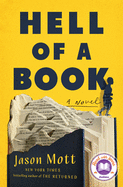
| Publisher: | Dutton | |
| Genre: | General, Literary, Southern, African American & Black, Fiction | |
| ISBN: | 9780593330968 | |
| Pub Date: | June 2021 | |
| Price: | $27 |
| Starred | Fiction |
by Jason Mott
This ambitious novel from Jason Mott (The Crossing; The Returned) explores the topography of lingering grief and trauma, as well as the pressures and contradictions of fame for a Black man in the U.S.
Alternating chapters tell the stories of two heroes: an African American boy nicknamed "Soot," and a nameless-by-choice African American author on tour for his breakout novel, Hell of a Book. Soot, bullied for the darkness of his skin, tries to master the knack of becoming invisible, which his parents believe will guarantee his safety in their rural North Carolina community. As he travels a country mourning its latest police shooting victim, the author finds his steps dogged by "the Kid," a 10-year-old boy with skin "darker than the darkness of sleep" whom only he can see. The Kid insists he's real, but the author, who has a condition that allows his mind to "break the boundaries between reality and imagination," isn't so sure. As he tries to shut out the world's expectations and inequities, the author's story intersects with Soot's and the Kid's in surprising ways.
The sands of reality constantly shift under readers' feet as the author feels pressure to ignore his Blackness or speak out about Black issues, receives a visitation from Nicholas Cage and faces the truth about his book's tragic genesis. Mott's unflinching meditation on racism, violence and navigating life as a Black man in America is a surreal and searing triumph. --Jaclyn Fulwood, blogger at Infinite Reads

| Publisher: | Knopf | |
| Genre: | Women, Satire, Literary, Fiction | |
| ISBN: | 9780525521082 | |
| Pub Date: | June 2021 | |
| Price: | $28 |
| Fiction |
by Diane Johnson
Diane Johnson (Le Divorce; Le Mariage; L'Affaire) specializes in comedies of manners centered on American women in pursuit of excitement and romance in unfamiliar locales, often across the Atlantic. Lorna Mott Comes Home is an inspired inversion of the premise: it's a reentry saga revolving around an American abroad who has decided that it's finally time to return Stateside.
As the novel opens, 60-something Lorna Mott Dumas is flying home to San Francisco after spending 18 years in a village in southeastern France with her French husband. She will miss neither her husband's philandering nor her outsider status. Formerly a respected art historian known for her spellbinding lectures, Lorna is hoping to revive her career in San Francisco for reasons of both economy and self-respect, but the road is rocky.
Sorely lacking in toughness are Lorna's three grown children, all of whom are in Northern California: they've each made financial messes of their lives that they would like someone else to clean up. Able but apparently unwilling to help is their father, Lorna's first husband, Ran Mott, who has remarried into staggering Silicon Valley wealth. To Lorna's torment, Ran seems indifferent to his offspring other than the product of his second marriage, 15-year-old Gilda, who, early on in the novel, serves her parents with a surprise that ultimately affects the extended Mott clan--even Lorna.
Lorna Mott Comes Home is a dishy drama with crystalline sentences and a roving point of view that can't help but give the delicious impression that characters are talking about one another behind their backs. --Nell Beram, author and freelance writer
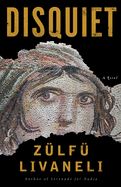
| Publisher: | Other Press | |
| Genre: | Psychological, Cultural Heritage, Political, Fiction | |
| ISBN: | 9781635420326 | |
| Pub Date: | June 2021 | |
| Price: | $14.99 |
| Fiction |
by Zülfü Livaneli, trans. by Brendan Freely
Former UNESCO Goodwill Ambassador Zülfü Livaneli's startling Disquiet requires multi-layered engagement: to appreciate it as a penetrating novel about a Turkish family confronting murder and to acknowledge it as intense sociopolitical testimony of contemporary, too-little-known, ISIL-led (Islamic State of Iraq and the Levant) genocide of the Yezidi people.
While sitting in a daily editorial meeting, Istanbul journalist Ibrahim realizes the Turkish victim of a fatal stabbing in Germany by neo-Nazis is his childhood friend Hussein. When Ibrahim returns to their hometown for the funeral, Hussein's mother repeats her dead son's last words to her: "'You can't protect me any longer, Mother, not even if you took me and put me back in your womb!'" Then Hussein's older brother reveals Hussein's final utterance two months later, "I was a human being." Hussein's family insists he was bewitched by the "she-devil"--a Yezidi survivor of heinous trafficking. Loving Meleknaz and her blind daughter caused Hussein's death, his family claims. Ibrahim instead seeks facts: the kaleidoscopic voices of extended relatives and friends reveal an empathic man driven to alleviate suffering, save others. Amid hate, intolerance, terrorism, finding Hussein's missing Meleknaz proves essential: "Please don't misunderstand, it's more myself I want to help than you," Ibrahim reasons. "I want to remember that I'm a human being... I feel a deep disquiet, a disquiet that's killing me slowly."
The remarkably accomplished Livaneli (Serenade for Nadia) combines his prodigious abilities and experiences--as writer (with even a reference to his own 2002 award-winning novel, Bliss), poet, composer, activist, politician--to create indelible fiction based on real-life horror. Confidently translated from the Turkish by Brendan Freely, the slim novel will demand attention, provoke outrage, perhaps even inspire lifesaving change. --Terry Hong, Smithsonian BookDragon
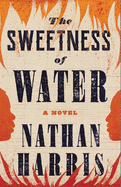
| Publisher: | Little, Brown | |
| Genre: | Small Town & Rural, Literary, Southern, African American & Black, Fiction, Historical, Gay, Civil War Era, LGBTQ+ | |
| ISBN: | 9780316461276 | |
| Pub Date: | June 2021 | |
| Price: | $28 |
| Fiction |
by Nathan Harris
At once devastating and defiantly hopeful, Nathan Harris's debut novel, The Sweetness of Water, traces the entangled lives of freedmen and farmers in the early days of Reconstruction.
As Confederate soldiers return defeated to the Georgia town of Old Ox, at the close of the Civil War, George and Isabelle Walker are reeling from news of their only son's death. Bereft, the couple takes solace in an unlikely friendship with brothers Prentiss and Landry, recently freed from the neighboring plantation. In a move that scandalizes the town, George hires the brothers to farm his land, paying them "a respectable wage doing what they know in the manner of any other men." Meanwhile, the revelation of a secret tryst between two Confederate soldiers shakes the town's already fragile social order, jeopardizing the path toward a better life for the brothers and the Walkers.
Harris is masterful in his use of characterization to access theme. For Prentiss and Landry, agency is vital: "So much of their lives had been pressed upon them by other men, it felt only right that each decision be prized--their own to make." In emphasizing their will to self-determination, Harris offers an antidote to the romantic racism endemic to many portrayals of the postbellum South. Landry's near-total silence throughout the novel, belying a rich interiority that Harris renders beautifully, is a particularly poignant genre critique. George and Isabelle are likewise vividly realized, endearing for their eccentricities and stubbornness in the face of oppressive social mores. Elegant and ambitious, The Sweetness of Water announces a major talent. --Theo Henderson, bookseller at Ravenna Third Place Books, Seattle, Wash.
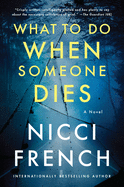
| Publisher: | Morrow | |
| Genre: | Psychological, Police Procedural, Mystery & Detective, Crime, Thrillers, Fiction | |
| ISBN: | 9780062876096 | |
| Pub Date: | June 2021 | |
| Price: | $16.99 |
| Mystery & Thriller |
by Nicci French
Police inform Ellie that her husband died in a fiery car crash with another woman, and evidence suggests he was having an affair. Her friends and family tell her to accept it, but Ellie knows something's not right. So she sets out to prove them all wrong in the unpredictable psychological thriller What to Do When Someone Dies.
Ellie Falkner and Greg Manning had a good marriage--they argued occasionally, but they were trying to get pregnant and Greg wasn't the type to have an affair. Ellie creates a timeline of the last two months of her husband's life to show Greg couldn't have had an affair. Both the police and her friends dismiss the timeline as inconsequential. When Milena Livingstone's name is revealed as the woman in the crash with Greg, Ellie enters Milena's workplace and gets a temp filing job with Milena's partner. She finds no mention of Greg at Milena's desk and no e-mails between them. Ellie is sure Greg and Milena's car accident is suspicious, but Greg's best friend shows her a note from Milena in Greg's things as proof of the affair. Just as Ellie becomes resigned to the idea her husband was cheating, a stranger's cryptic remark at Greg's funeral causes Ellie to realize her life is in danger.
Partners Nicci Gerrard and Sean French write catchy thrillers under the pen name Nicci French (House of Corrections), and What to Do When Someone Dies serves as a solid entry in their long list of novels. Some of Ellie's actions may seem questionable, but her instincts ultimately lead her to the truth. --Paul Dinh-McCrillis, freelance reviewer
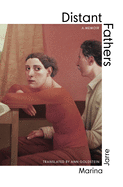
| Publisher: | New Vessel Press | |
| Genre: | Biography & Autobiography, Women, Europe, Personal Memoirs, Italy, History, Jewish | |
| ISBN: | 9781939931948 | |
| Pub Date: | June 2021 | |
| Price: | $16.95 |
| Starred | Biography & Memoir |
by Marina Jarre, trans. by Ann Goldstein
First published in Italy in 1987, Distant Fathers is an extraordinary memoir from a writer with an unforgettable voice. Marina Jarre was born in Latvia to a Jewish father and an Italian mother. When her parents divorced she moved to Italy to live with her grandparents, devout, French-speaking Waldensian Protestants. Jarre (1925-2016) makes her rootlessness a major theme in the book, but her outsider perspective can't fully explain her persistent sense of alienation. The book is roughly divided into three sections: her childhood in Latvia and Italy; her adolescence amid the turbulence of Fascist Italy and World War II; and her adulthood as a writer and a mother. As the years go on, Jarre never seems to lose the childhood sense that "I never get it right... there's no harmony between me and the space around me!"
While the book is roughly chronological, it is always subject to the unusual rhythms of Jarre's mind. Wartime remembrances sometimes slip in between discussions of love and the author's passion for plays, for example, all according to an obscure logic that can resemble free association. The way Jarre shifts from subject to subject points not only to her odd way of thinking but her playfulness. Her sly sense of humor can sneak up on readers, as can her seeming unconcern for what they might think of her. Distant Fathers is remarkable because of Jarre's ability render her inner world precisely, including her lifelong sense of detachment. The book's great achievement is allowing readers fully to inhabit Jarre's fascinating, singular mind. --Hank Stephenson, the Sun magazine, manuscript reader
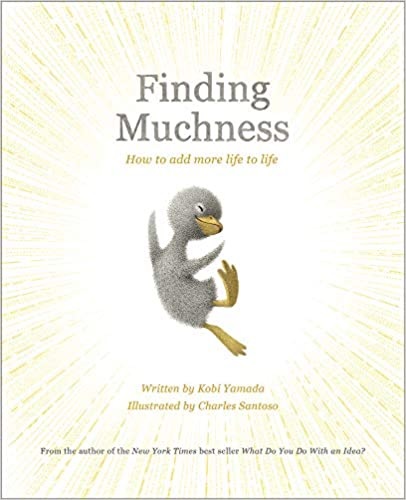
| Publisher: | Compendium | |
| Genre: | Self-Help, Personal Growth, Happiness, Affirmations, Motivational & Inspirational | |
| ISBN: | 9781970147438 | |
| Pub Date: | June 2021 | |
| Price: | $14.95 |
| Psychology & Self-Help |
by Kobi Yamada, illust. by Charles Santoso
"Recommended for ages 99 and younger," Finding Muchness: How to Add More to Life by Kobi Yamada is a sweet illustrated book demonstrating different paths to leading a happy and fulfilled life. The text runs alongside an endearing duckling as he emerges from his shell into a wider world. Charles Santoso's illustrations are whimsical and beautiful, and accompany Yamada's words as they invite readers to be open to experiencing wonder and being brave. Readers watch the duckling discover new things and learn how to find "muchness," a sense of coming to the world with a heart full of hope and imagination.
Muchness is found in believing we can do something new, in splashing and dancing in puddles and believing that we can leap over logs that maybe seem a little too high. Yamada writes: "If in doubt, love more. The heart is much like a balloon: the fuller it becomes, the more it wants to fly." His accessible bits of wisdom aim to help readers to find peace, joy and contentment with themselves. He asks readers to take risks when it comes to caring deeply or looking foolish, and to "choose courage over comfort" as the little duckling continuously tries his best, whether learning to fly or facing down a big scary wave in the paper boat he makes himself. Finding Muchness is an entertaining reminder for readers to be gentle with themselves and to live in ways that honor themselves and the world around them. --Michelle Anya Anjirbag, freelance reviewer
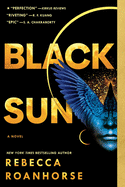
| Publisher: | Gallery/Saga | |
| Genre: | Epic, Indigenous, Fantasy, Fiction, Historical | |
| ISBN: | 9781534437685 | |
| Pub Date: | June 2021 | |
| Price: | $16.99 |
| Now in Paperback |
by Rebecca Roanhorse
Rebecca Roanhorse (the Sixth World series) continues to prove herself a mighty talent in Black Sun, the stunningly fresh and imaginative opener to her Between Earth and Sky trilogy.
A storm of reckoning is trained on Tova, the city of the Sky Made Clans, where the last Sun Priest ordered his deadly Watchers to massacre the Carrion Crow clan years ago. Vengeance comes in the form of Serapio, a young man with sewn-shut eyes and an immense power he plans to unleash during Tova's solstice celebration. Xiala, a tough, hard-drinking outcast from a legendary people with a magical connection to the ocean, captains the ship transporting him. In Tova, newly appointed Sun Priest Naranpa works to mend ties with the Carrion Crow and reform the priesthood, but factions within the celestial tower of the priests rebel against her progressive ideas and lowborn origin. Xiala clashes with her suspicious crew and bonds with Serapio, whom she considers "dangerous, unfathomably attractive, and clearly on some single-minded mission that made him entirely unavailable." However, brewing unrest may upset the city's fragile balance before they can arrive.
This pre-Columbian-derived fantasy stands relatively alone in a genre dominated by European- or Asian-inspired settings, and Roanhorse does justice to the setting with diverse and detailed cultures, a complex political landscape and fantastical creatures and magical systems rooted in a blend of ancient Indigenous mythology. Winner of MPIBA's Reading the West award for fiction, this title is also shortlisted for the Hugo, Locus and Ignyte awards. Bold, richly emotional and expertly crafted, Black Sun shines brighter than even the highest expectations. --Jaclyn Fulwood, blogger at Infinite Reads
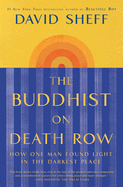
| Publisher: | Simon & Schuster | |
| Genre: | Biography & Autobiography, Mindfulness & Meditation, Buddhism, Zen (see also Philosophy - Zen), Body, Mind & Spirit, Buddhist, Religion, Criminals & Outlaws, Philosophy | |
| ISBN: | 9781982128487 | |
| Pub Date: | June 2021 | |
| Price: | $17 |
| Now in Paperback |
by David Sheff
For 30 years, Jarvis Jay Masters has been a resident of San Quentin State Prison's death row, some two decades of them in solitary confinement. As one of 700 inmates currently in that grim status, his story would not be remarkable, but for the fact that during his long imprisonment he's become an esteemed Buddhist teacher and a confidant of the well-known writer and teacher Pema Chödrön.
In The Buddhist on Death Row: How One Man Found Light in the Darkest Place, journalist David Sheff (Beautiful Boy) renders Masters's story in highly sympathetic fashion, tracing his transformation and describing the efforts of Chödrön and a growing cadre of supporters to overturn what they believe is his unjust death sentence.
Though he seems to share a belief in Masters's innocence, Sheff is less concerned with the machinations of his subject's multiple (and so far unsuccessful) legal appeals than he is with the way Buddhist practices have helped him to cope with his dire circumstances. Through his deep engagement with these teachings, he explains, Masters has come to understand that "when his mind was free, he was free," and that many who live their lives outside the walls of a prison are themselves in chains.
For all its hardship and heartbreak, The Buddhist on Death Row is an inspiring story of one man's ability to surmount suffering by applying the power of his mind. Anyone who's been tempted to explore meditation and mindfulness but who hasn't taken the first step should find encouragement in Jarvis Masters's far more difficult journey. --Harvey Freedenberg, freelance reviewer
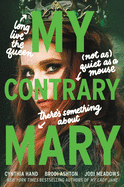
| Publisher: | HarperTeen | |
| Genre: | General (see also headings under Social Themes), Europe, Family, Romance, Young Adult Fiction, Historical | |
| ISBN: | 9780062930040 | |
| Pub Date: | June 2021 | |
| Price: | $18.99 |
| Starred | Children's & Young Adult |
by Cynthia Hand, Brodi Ashton, Jodi Meadows
This hilarious and irreverent start to a new trilogy by the trio of YA authors who created the Lady Janies series gives Mary, Queen of Scots, a much cheerier future than a beheading.
My Contrary Mary takes the true story of the young, ill-fated queen of Scotland and France and twists it into a thoroughly delightful pretzel of magic, intrigue and intentional anachronisms. Mid-16th-century Europe is divided in many ways, but authors Cynthia Hand, Brodi Ashton and Jodi Meadows insert yet another partition: Eðians and Verities. Eðians are shapeshifters who can transform into animal forms on demand. Verities are "not amused" by Eðians, believing that "people should be people, period." Mary is on the verge of marrying Francis, the future king of France, a country that is firmly in the Verity camp--but Mary is secretly an Eðian, capable of becoming a very sneaky mouse. Another problem: Mary's uncles are always on the lookout to benefit themselves and killing the king would help them immensely. It will take more than the potions and prognostications of Nostradamus, seer and adviser to the throne, and his daughter, Ari, to fix the mess in which the royal families and their hangers-on have found themselves.
My Contrary Mary is packed with sly jokes and references to contemporary culture. Points of view alternate by chapter among Mary, Ari and Francis. Readers catch delicious glimpses of Francis's anxiety about the pressure to produce an heir with Mary; Ari's professional insecurity and raging crush on one of Mary's ladies-in-waiting; and Mary's dawning understanding of what it really means to rule a country. Like My Lady Jane, this inventive work of historical fiction is a tremendously entertaining feminist version of French Renaissance life. We are very amused. --Emilie Coulter, freelance writer and editor
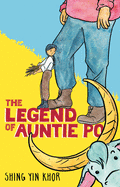
| Publisher: | Kokila/Penguin | |
| Genre: | People & Places, United States - Asian American, Fairy Tales, Folklore, Legends & Mythology, Juvenile Fiction, Comics & Graphic Novels, Historical | |
| ISBN: | 9780525554882 | |
| Pub Date: | June 2021 | |
| Price: | $22.99 |
| Children's & Young Adult |
by Shing Yin Khor
The year is 1885 and Mei and her father, Ah Hao, work in a Sierra Nevada logging camp in this mesmerizing middle-grade debut by author/illustrator Shing Yin Khor (The American Dream?).
The first few pages of Khor's clever graphic novel delineates underlying racial disparities: "Every night, my father and I feed a hundred lumberjacks"; "We also feed forty Chinese workers who do not receive board." Mr. Andersen has been their boss for 11 years and his daughter, Bee, is Mei's best friend. But when racial tensions outside the camp escalate into vicious Chinese-targeted violence, Mr. Andersen--despite his insistence that Mei and her father are "like family"--fires his Chinese crew, including Ah Hao. Mei remains with Bee for safety, and both girls dream of different futures. Even though she was born in the U.S., Mei is well-aware of her limited options because she's Chinese American. Telling stories sustains Mei (and her young friends), so she weaves expansive yarns that feature the behemoth "mother of all loggers," Auntie Po, and her blue buffalo, Pei Pei.
"If history failed us, fiction will have to restore us," Khor writes in an author's note. Historical erasure of Asian Pacific Americans is not new, despite a documented presence predating the founding of the United States (Khor's meticulous research includes a helpful bibliography at book's end). The inviting digital pencil and watercolor art--especially affecting in capturing changing and reacting expressions--significantly elevates the nuanced narrative. In this reclamatory and illuminating graphic novel, Khor underscores the healing power of sharing stories. --Terry Hong, Smithsonian BookDragon
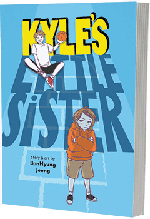
| Publisher: | Jy/Yen Press | |
| Genre: | Humorous Stories, Humorous, Juvenile Fiction, Comics & Graphic Novels | |
| ISBN: | 9781975316549 | |
| Pub Date: | June 2021 | |
| Price: | $13 |
| Children's & Young Adult |
by BonHyung Jeong
BonHyung Jeong, a Korea-born, internationally raised and U.S.-educated artist, astutely channels the universal experience of growing up--and sometimes growing away--in her delightfully boisterous middle-grade graphic novel debut, Kyle's Little Sister. For her entire life, Grace Bailey has "not once... been free from being 'Kyle's little sister.' " Being labelled with a three-word phrase instead of being called by her own name is bad enough. Even worse, though, is that her familial proximity to Kyle has ensured that others--especially at school--make automatic assumptions based solely on their siblinghood: "That's Kyle's sister?! She's nothing like him," the kids decided when she was seven. At age nine, the homeroom teacher greeted her with, "I bet you're also good at sports." Nope, not so much.
"I'm pretty sure I knew the moment I was born that he and I wouldn't get along," Grace insists in the opening panel. Over the years, though, she's managed to become her own person. She has her own bff gal pals, Jay and Amy (even though Amy is Kyle's buddy's little sister). Kyle might be the basketball star, but Grace has her own talents: she's an unrivaled, gifted gamer. Bottom line: she really is nothing like Kyle--he's athletic, popular and generally everyone's favorite. Except, of course, not Grace's. The feeling is mutual: "It was nice not having you around," eighth-grader Kyle dismisses her when she enters his middle school as a sixth-grader. As they march up the steps of Elington Middle School, begrudgingly forced together on the first day, Grace announces, "I bet it's gonna be the worst year ever."
Grace's frustrated verdict seems initially prescient. Amy, obsessed with romance since kindergarten, is being pushy, manipulating Jay into pursuing her new romantic interest: Kyle?! "I try not to get involved when it comes to Kyle," Grace demurs as Jay awkwardly tries to ignore Amy's attempts to maneuver a love connection. When Amy's not matchmaking, she's making self-absorbed demands: "Why don't we go to my place and I choose what to play?" Negative responses from Grace or Jay elicit further less-than-ideal alternatives. Amy, however, remains indefatigable while Grace silently muses: "I wonder if there's anyone who can win against Amy." Given Amy's tone-deaf, bulldozing tactics, a blow-up proves inevitable. Harsh words are thrown about among the three girls, feelings get trampled and, somehow, amid the finger-pointing accusations, Grace suddenly lands as the odd one out. Her texting screen remains empty, lunch becomes a solo event and greetings are even met with silence. "I'm better off being alone," she tries to convince herself.
But just when Grace is ready to admit "I'm actually not fine at all," her assigned science partner, Cam, asks Grace for her phone number, invites her to share lunch and quickly makes Grace believe "I've made a new friend." Cam is energetic and popular but, it turns out, she's also a bit mean. The sudden attention she's directing at Grace isn't genuine--and when Cam unveils her true intentions, it's up to Jay and Amy to show Grace what real friendship should look like. And--surprise!--maybe being Kyle's little sister isn't so awful, after all.
Nothing in Jeong's story is upsettingly surprising: relationships change, siblings rival, best friends fight, real friends make up, social groups transform and people hopefully grow. That familiarity is exactly what elevates Jeong's narrative, providing universal entry points into empathic understanding. Her whimsically stylized art adds an ongoing invitation for interactive engagement, as the characters are constantly in motion: walking, playing, eating, ignoring and sulking. Her layouts are rarely uniform or predictable, the scenes only sometimes contained within panel borders, many overflowing beyond the actual pages. Color is vibrant throughout, adding intensity to flashy fashion or an over-flushed face. While the Bailey family presents as white, Jeong depicts a diversity of races and ethnicities throughout.
Beyond the lively visuals, Jeong is a multi-layered storyteller who relies on much more than dialogue bubbles to reveal her characters' thoughts. Asides directed at readers appear in boxes with italicized text; whispers are seen in lowercase type encased in dotted borders; mobile texts presented in a computer font are strewn throughout--communication can happen in many ways, she reminds readers. She's also deft at inserting humor, especially in creating exaggerated reactions and highlighting overwhelming emotions. Even as her story concludes, Jeong continues to entertain with a graphic afterword in which she introduces herself and her work, and acknowledges "quite a journey to get to the ending of this book," including illustrated shout-outs to her friends and family who enabled the book's publication. Her "thank you" appears in Korean characters with a declaration to "see you next time!" Hopefully that's a legit promise to lucky audiences for a continuing future with Kyle's Little Sister. --Terry Hong